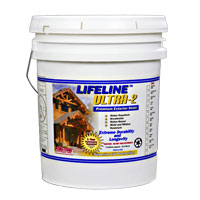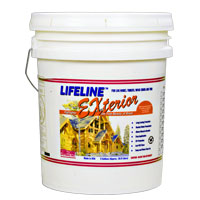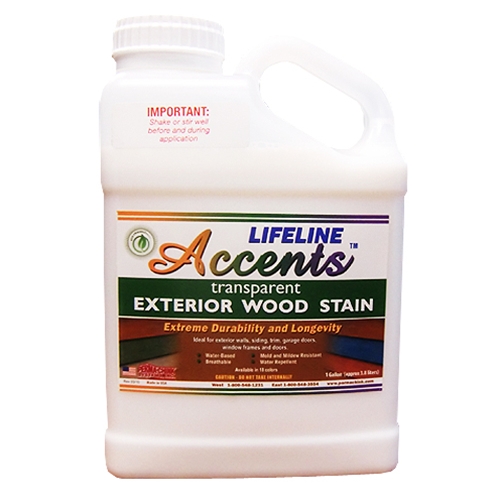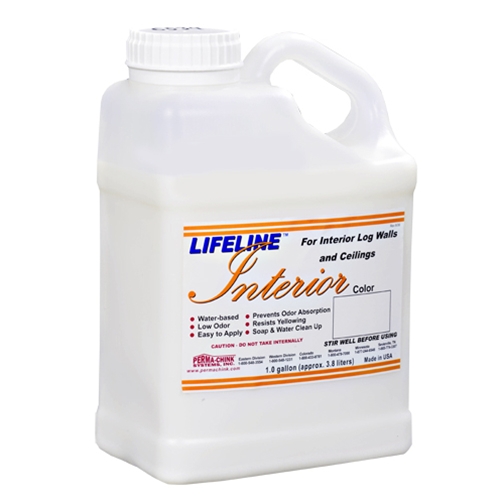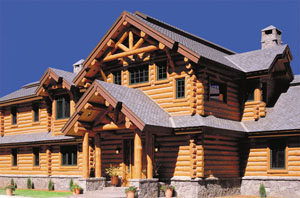 We often get asked whether Perma-Chink's Lifeline™ wood stains and finishes can be applied over an existing wood stain. Since the answer to this question is somewhat complex, we'll look at the various types of wood stains individually.
We often get asked whether Perma-Chink's Lifeline™ wood stains and finishes can be applied over an existing wood stain. Since the answer to this question is somewhat complex, we'll look at the various types of wood stains individually.
First and foremost, for the best look and performance of a Lifeline finish, it's always best to remove any existing old wood finish unless it already is a Lifeline finish. Even then, the existing Lifeline finish needs to be in pretty good shape before we recommend applying another coat on top of it.
That pretty well covers what should be done. However the question, posed another way, is “can a Lifeline finish be applied over other brands of existing finishes?” If the existing finish is water-based and there are no signs of grayed wood and the color on all of the walls is fairly uniform, the answer is typically yes with some reservations. For example, if the existing water-based log finish contains wax there may be a problem with adhesion or “fish eyes” forming during application. But you have to be careful, not all water-based finishes are created equal. Water/oil emulsion stains claim to be water-based but in fact contain enough oil that adhesion may become an issue.
Meet The Lifeline Family |
||
|
|
|
|
|
|
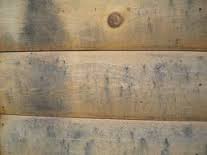 |
| Dark Mold Growth |
In general Lifeline should never be applied over film-forming oil stains like Sikkens Cetol Log & Siding, Sashco Transformation, or other alkyd oil-based stains. The same thing applies to the oil/water emulsion finishes. These types of finishes should always be removed before applying Lifeline. But what about penetrating oil stains like WOODguard, Outlast Q8 Log Oil, TWP, Olympic and others? It really depends on the individual situation. Since one-coat oil stains usually don't last more than a couple of years, we rarely encounter a situation where the condition of the surface is good enough to apply one of our Lifeline transparent stains without first removing the remaining stain residue. By the time someone typically decides that the existing finish is in need of repair there is usually enough grayed wood or dark mold growth present to require getting back down to a clean bare wood surface.
A more challenging question is when someone decides that he or she wants to apply Lifeline over a penetrating oil stain less than a couple of years old. The best and safest way to proceed is to remove the existing finish. Attempting to apply Lifeline directly over an oil-based finish is risky and the last thing any of us want is for you to be disappointed with the results.
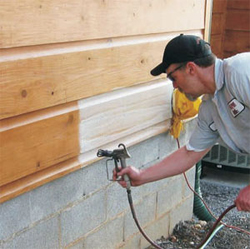 |
| StripIt® |
So what's the best way to remove an existing oil finish? If at all possible, chemical stripping is the way to go. The components in most chemical finish removers like our S-100™ and StripIt® not only soften the finish but they also help remove any residual oil that may present in the top layer of wood. Media blasting, on the other hand, may remove the alkyd film or the oil-based pigments but does not remove any oils that may have penetrated into the wood. If Lifeline is immediately applied to the blasted surface, there is a chance that the remaining oil residue will come to the surface creating an adhesion problem or blisters in the Lifeline film, especially on sunny walls. After blasting the home to remove the oil finish, a good washing with Log Wash will remove any blasting residue prior to applying the finish of your choice.
Some Rules of Thumb
- If you do not know what specific wood finish is on your home, remove it.
- If there are black streaks, mold spots or any other discolorations that you do not want to see through the final finish, clean the surface down to bare wood and remove them
- If there are signs of grayed wood or if the existing finish has areas that have peeled, clean the surface down to bare wood.
- Never apply a Lifeline finish over oil-based, alkyd film forming finishes.

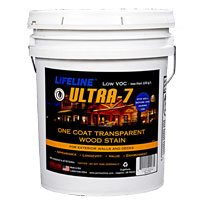 Ultra-7
Ultra-7